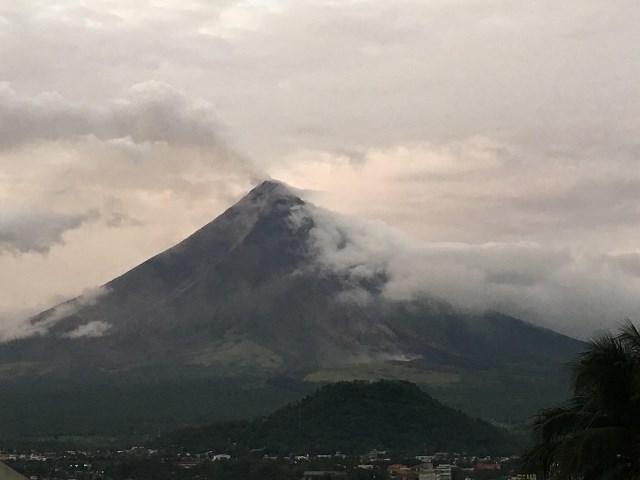PHIVOLCS lowers Mayon Volcano status to Alert Level 1
Published March 5, 2024 10:58pm The alert status for Mayon Volcano has been lowered from Alert Level 2 or Moderate level of unrest to Alert Level 1 or Low Level of Unrest, the Philippine Institute of Volcanology and Seismology (PHIVOLCS) announced on Tuesday. “This means that the volcano’s state of unrest has declined to low […]


The alert status for Mayon Volcano has been lowered from Alert Level 2 or Moderate level of unrest to Alert Level 1 or Low Level of Unrest, the Philippine Institute of Volcanology and Seismology (PHIVOLCS) announced on Tuesday.
“This means that the volcano’s state of unrest has declined to low levels and that the likelihood of an eruption occurring within the immediate future has diminished,” PHIVOLCS added.
The basis of the announcement were the observation and data gathered by the scientists that showed a steady decline of activity within the monitored parameters.
As to Volcanic Earthquake Activity, the Mayon Volcano Network (MVN) reported a decline in the number of earthquakes to a daily average of 2-3 earthquakes per day since the first week of January 2024.
“A considerable number of these earthquakes are related to rock fracturing processes within the volcano. In addition, rockfall from Mayon’s summit dome averaged 0-1 events/day indicating a significant slowing down of lava dome growth,” PHIVOLCS said.
While the long-term ground deformation data obtained from Global Positioning Systems (GPS), Electronic Distance Measurements (EDM) and electronic tiltmeters show the edifice is still inflated overall.
“Short-term data indicate deflation of the general northern middle slopes, whereas recent inflation of the general southern slopes and continued inflation of the upper slopes is occurring. Microgravity observations likewise show positive (density increase) and negative (density decrease) microgravity anomalies on the northern lower and middle slopes of the volcano, respectively. Ground deformation and microgravity anomalies are interpreted to be caused by crystallization of the resting magma beneath the volcano.”
On Volcanic Gas Emission, the agency said Sulfur Dioxide or SO2 emissions are “above the background level of 500 tonnes/day, consistent with continued degassing from the resting un-erupted magma.”
“Sulfur Dioxide emission or SO2 flux from Mayon crater based on continuous gas spectrometry has varied between a high 2,394 tonnes/day on 22 January 2024 to a low of 420 tonnes/day on 5 March 2024. Since January 2024 to present, the SO2 flux has averaged 1148 tonnes/day.”
The experts also observed that Mayon’s summit crater has generated only weak to moderate degassing plumes this year.
“Since 8 December 2023 when the status of Mayon was lowered to Alert Level 2, crater glow, or incandescence associated with superheated gas emitted from the summit crater, has remained weak and visible only with the aid of a telescope,” PHIVOLCS said.
There is no lava observed flowing onto the Mi-isi, Bonga and Basud Gullies.
“These observations of stable summit conditions, sparse rockfall events and lack of movement of the lava flows are consistent with the absence of magma re-supply to the shallow levels of the edifice.”
The lower alert status, however, does not mean a cessation of volcanic activities. The alert status can be changed depending on the activities in the next few days.
Warning to the public remains
PHIVOLCS maintains that the public should avoid entering the six-kilometers Permanent Danger Zone or PDZ due to the possible occurrence of rockfalls, avalanches, and sudden steam-driven or phreatic eruption at the summit area.
In case of an ash fall event that may affect nearby communities, the people should cover their nose and mouth with damp, clean cloth or dust mask.
Heavy rainfall, PHIVOLCS warned, could generate lahars and sediment-laden stream flows in rivers draining gullies on which PDC deposits were emplaced.
“Civil aviation authorities must also advise pilots to avoid flying close to the volcano’s summit as ash from any sudden phreatic eruption can be hazardous to aircraft. Furthermore, people living in valleys and active river channels are cautioned to remain vigilant against sediment-laden streamflows and lahars in the event of prolonged and heavy rainfall brought about by the advent of the rainy season.” — BAP, GMA Integrated News














